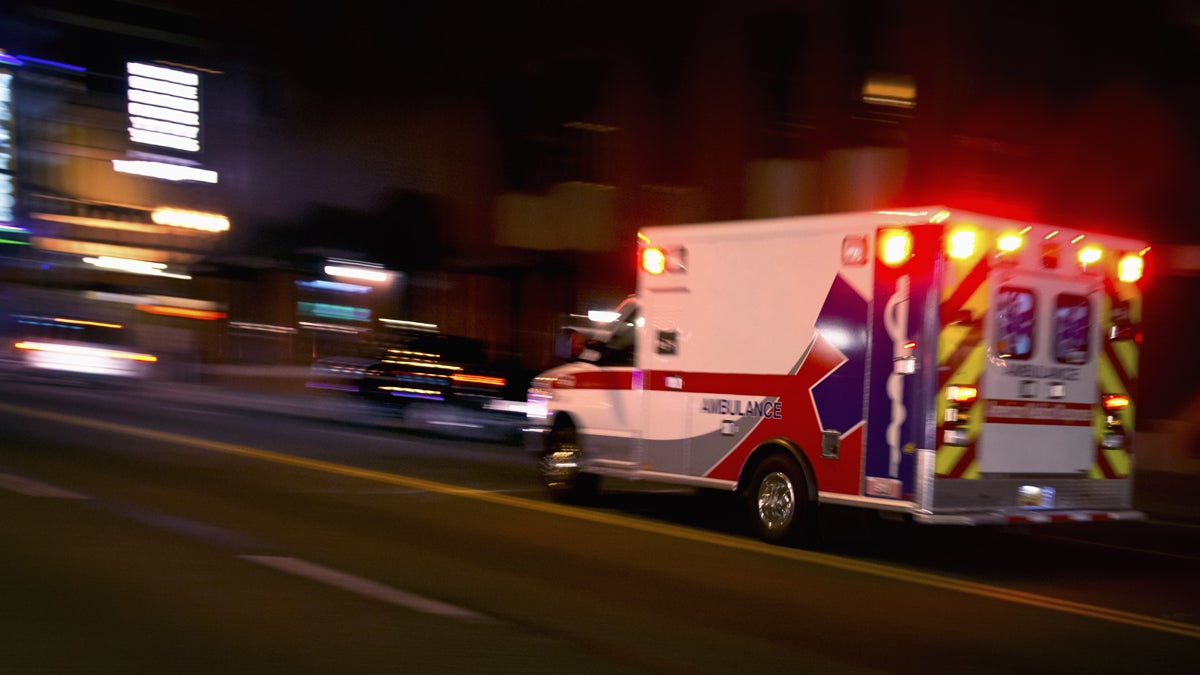Philly police’s ‘scoop and run’ policy may benefit most severely injured
Listen File photo via ShutterStock) " title="ambulance_file_photo_1200" width="1" height="1"/>
File photo via ShutterStock) " title="ambulance_file_photo_1200" width="1" height="1"/>
An ambulance speeds through traffic at night. (File photo via ShutterStock)
Philadelphia adopted a “scoop and run” policy more than 20 years ago. It allows police, often first to the scene, to bring seriously injured people to the emergency room, as opposed to waiting for an ambulance.
Roger Band, an emergency doctor at the University of Pennsylvania hospital, often treats those patients. He and colleagues wondered whether the police policy made a difference, whether outcomes were any different if brought in by police or ambulance crews.
The assumption, he says, is that patients brought by paramedics would fare better because of access to emergency medical care onsite and en route to the hospital.
Band and colleagues reviewed the city’s trauma registry of 4,122 people with serious gunshot or stab wounds brought to eight area trauma centers between 2003 and 2007. While patients brought to emergency rooms by police were more likely to die, they were also more severely injured to begin with. Once taking that into account, Band didn’t find any major difference in overall adjusted mortality rates for patients transported by police versus EMS.
“It was interesting to find that at least in this very specific situation in a densely populated — both in terms of patient volume and in terms of trauma center volume — that the police for this specific type of patient were able to do as well as EMS and fire rescue,” said Band.
Overall, about one in three patients died.
When zeroing in on those with the most severe injuries, Band’s group found police actually “did a little bit better in some of the more critical injured subgroups of patients.”
Why would that be? Police historically have not provided much care, but are often first on scene and first to secure access to victims. So is time the most critical factor? More than receiving needed care along the way? Is EMS falling short?
Band says the study, published in the Annals of Emergency Medicine, “raises provocative questions,” but he doesn’t have the answers. He emphasizes the study wasn’t designed in a way that could identify causes, only associations (additionally, data on out-of-hospital interventions either by EMS or police, as well as police response and transit times weren’t available).
Even so, he cautions against leaning toward one interpretation:
“The most important thing, we certainly don’t believe this is because EMS is doing a bad job,” says Band. “EMS does a wonderful job working hard under very rigorous conditions to provide excellent care.”
If anything, Band says, the findings offer some assurance that patients have as good a shot at survival, no matter how they get to the ER.
“It simply makes us feel better about the practice as is.”
The findings echo a citywide study conducted in the mid 1980s.
WHYY is your source for fact-based, in-depth journalism and information. As a nonprofit organization, we rely on financial support from readers like you. Please give today.

